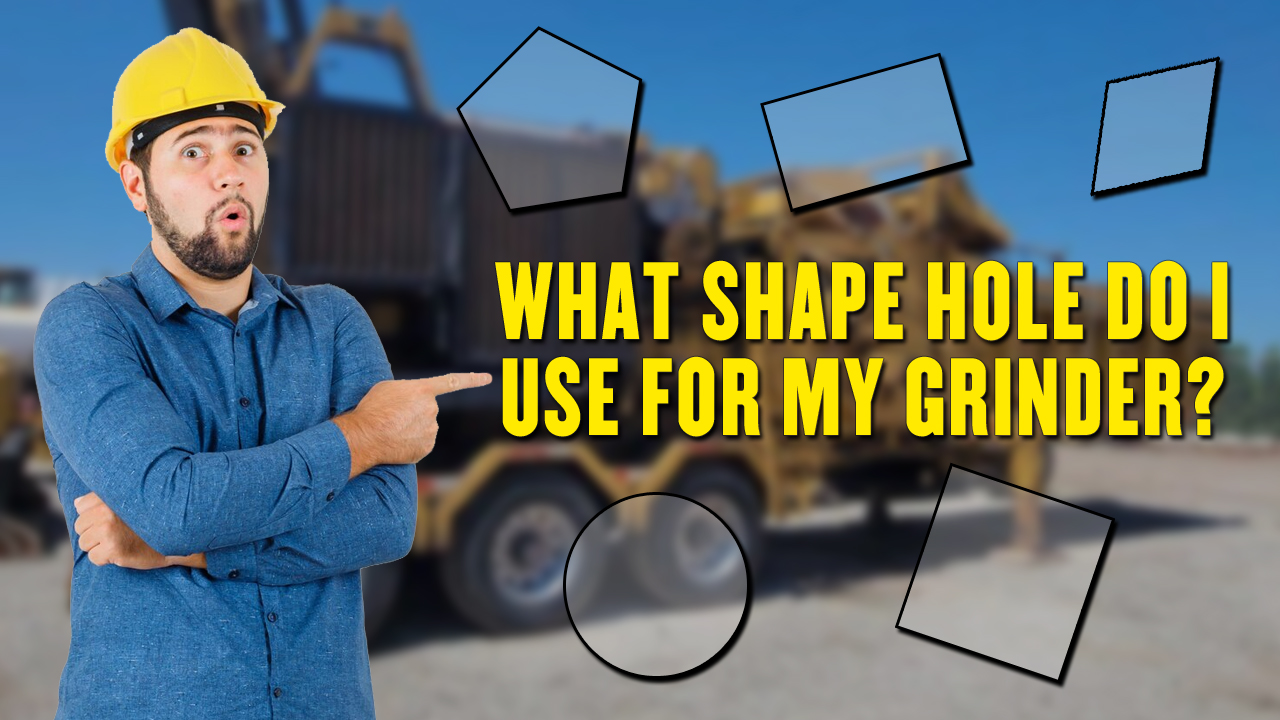
In a previous article we discussed the different steel materials that wood grinder screens can be made out of like T1, AR Plate, and Hardox; Now we are going to discuss what shapes should be used to give maximum production and quality.
It amazes me that many of our best customers unknowingly use the exact same screen shapes in their grinders disregarding the fact that their infeed material is different from job to job. Do I use the same style hole if I am doing a rough grind just to get material on trucks and off the site compared to doing a final grind? The size of the opening will be larger, of course, but what about the shape? If you have been in the industry for a while, I am sure you have heard the general rule to use round screens on tub grinders and hexagonal or square holes on horizontal grinders. This rule has some truth but the decision making has become more analytical and sophisticated. Many variables such as moisture of the material and what type of wood waste can vary your decision. Another fun fact, that is considerably more accurate, is that 70% of your ground material will be ½ the size of your screen opening. If you run your grinder into a screening plant you will find this to be 90%+ accurate.
Horizontal and tub grinders grind differently so to get the same result, different screen shapes may be used.
With that said, the information below will apply to both style of grinders.
The most common shapes of screens for grinders are Round, Square, Hexagonal, Rectangular, and Diamond. For our discussion, we will compare each style of shape and its quality of finished product compared to production rate. Let’s use a 2” screen size for our example. Before starting this exercise, you must know the following facts:
- The less open surface area the less production
- The less open surface area the higher the quality of product
- The less open surface area the more wear on the tips and screen
- The less open surface area the more fines produced
Below you will see actual open surface area for each shape:
- 2” round - 3.14 square inches
- 2” square - 4 square inches
- 2” hexagonal - 3.46 square inches
- 2” x 4” rectangle - 8 square inches
- 2” x 4” diamond - 4 square inches
As you can see a 2” square shape has approximately 18% more open surface area compared to a 2” hexagonal shape directly resulting in 18% more production. This analysis is 100% mathematically correct however does not show the most important factor when considering production and surface area. Production has a direct relationship with open surface area of the entire screen, not just the shape. We must subtract the solid steel portion including baffles. This results in the actual open surface area. To leave behind the math, you will find that round holes have the least amount of screen area thus production is slow. Here is our guide to shapes:
Round Holes are used in tub grinders when:
- Feeding dryer materials
- Quality is king and you need the best quality ground product
- Material must be ground fine
Square Holes are used in all grinders when:
- Production is important
- Quality is important but not super critical
Hexagon Holes are used in all grinders when:
- You want excellent production with fair to good quality (Very popular for mulch producers)
Rectangular Holes/Grid are used in all grinders when:
- Customer is looking for production and quality of grind is not very important.
- Coarser sizing may be desired.
Diamond Holes are used in all grinders when:
- Material has high moisture and/or is very fibrous wood
(Like palm, wet grass, leaves, and compost.)
- You want to avoid build-up/blind (clog) (Diamond is the best in this case)
To re-iterate, many variables determine which shape screen you should select. What finished material your customers are wanting will play a major role in this decision. Are they wanting lots of fines, very little fines? Are you considering double or triple grinding the material?
Screen selection is a balancing act between quality and production. In many cases our customers carry a variety of shapes and sizes in stock so they can change screen sizes when the material dictates that they do so. I highly suggest that you run a couple experiments and time what it takes to coarse grind your material first and do a secondary grind with a smaller screen compared to the time required for a one pass system. You will find that you have less fines and less wear on your tips and screens. Only a test run will determine the answer on your particular material.
Important Example:
Two customers called saying they recently purchased “used” grinders and have installed coarser screens but they are still producing a very, very fine material and production is very slow. A scenario that contradicts the above information. Why?...
The Solution:
The above information on screen sizes and shapes only truly applies if you have the correct tip/teeth configuration on your grinder. In both instances, the customers kept increasing the size of their screens with no positive results, but after seeing pictures of both mills it was easy to see that they had too many hammers/tips and needed a different configuration. I sent them each a new configuration for the hammers and tips and problem was solved.
To learn more about our grinder screens or other parts see our Grinder Wear Parts page, or contact us to see what screens we can make for your grinder.
